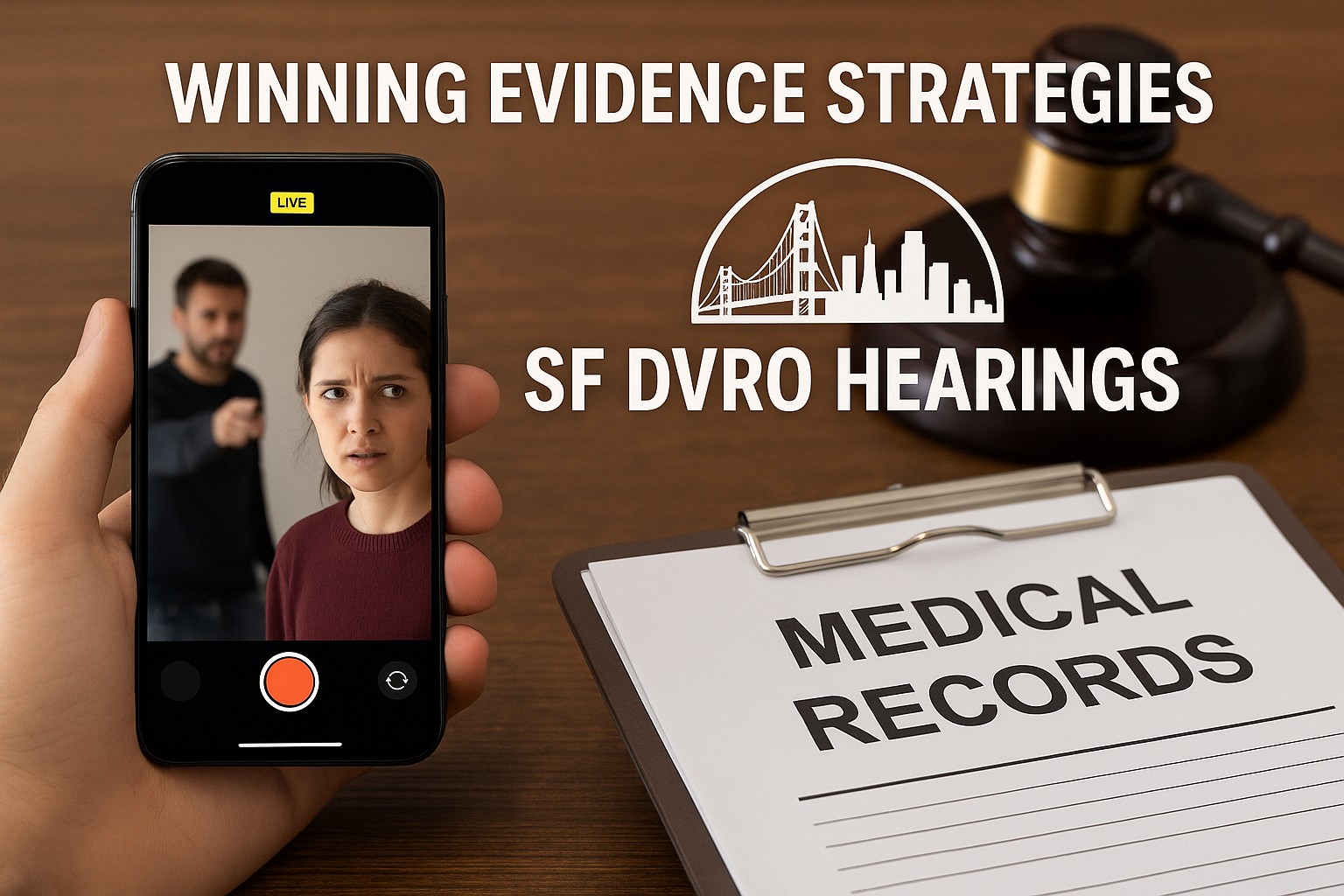Winning Evidence Strategies: Capturing iPhone Live Photos & Medical Records for SF DVRO Hearings
Learn how to strengthen your Domestic Violence Restraining Order case in San Francisco with winning evidence strategies, including capturing iPhone Live Photos, preserving metadata, and securely presenting medical records in court.

In a San Francisco Domestic Violence Restraining Order (DVRO) hearing, the quality and credibility of your evidence can make or break your case. While personal testimony is important, visual proof and medical documentation can provide persuasive, objective support for your claims.
This guide focuses on two highly effective evidence types: iPhone Live Photos and medical records. You’ll learn how to capture, preserve, and present them to maximize their impact in court — while maintaining chain of custody and complying with California’s evidence rules.
1. Why Evidence Quality Matters in DVRO Hearings
The judge’s decision in a DVRO hearing often hinges on:
-
Credibility — whether your story is consistent and supported by facts
-
Relevance — whether the evidence directly relates to the alleged abuse
-
Authenticity — whether the evidence can be verified as genuine and unaltered
High-quality, properly presented evidence can:
-
Support your account of events
-
Show patterns of abuse over time
-
Corroborate your injuries or damages with professional documentation
2. Capturing & Preserving iPhone Live Photos
What Are iPhone Live Photos?
Live Photos capture 1.5 seconds of video and audio before and after a still shot. This means they can provide context — for example, the aggressor’s tone of voice or actions immediately before an incident.
How to Capture for DVRO Evidence
-
Enable Live Photos — In your iPhone Camera app, tap the Live Photo icon (three concentric circles) to turn it on.
-
Keep the camera steady — Avoid blur by bracing your hands or using a surface.
-
Document injuries or damage immediately — Take photos as soon as possible after the incident.
Preserving Metadata
-
Do not edit the original photo — Editing may change the metadata.
-
Use AirDrop, iCloud, or direct USB transfer — Avoid sending via social media, which can strip metadata.
-
Backup original files — Store copies on an encrypted drive or with your attorney.
3. Using Medical Records as Evidence
Why Medical Records Are Powerful
-
Provide objective proof of injuries
-
Show professional assessment of cause (e.g., “injury consistent with assault”)
-
Document treatment timelines
How to Obtain Your Medical Records in San Francisco
-
Contact your healthcare provider’s medical records department
-
Complete a HIPAA release form
-
Request certified copies for court use
-
Ask your provider to include all relevant visit notes, imaging results, and lab reports
4. Presenting Your Evidence in SF Superior Court
Before the Hearing:
-
Organize your evidence chronologically
-
Prepare printed copies for the judge and the other party
-
Label exhibits clearly (e.g., “Exhibit A: Live Photo from 05/12/2025”)
At the Hearing:
-
Explain the relevance of each item
-
Be ready to authenticate — describe when, where, and how you took the photo or obtained the record
-
Keep your answers concise and factual
5. Protecting Privacy & Safety
-
Redact unrelated sensitive information from medical records
-
Store digital evidence securely
-
Share copies only with your attorney, the court, or law enforcement
Conclusion
Strong, credible evidence is your best ally in a San Francisco DVRO hearing. By capturing Live Photos properly, preserving their metadata, and presenting certified medical records, you give the judge clear, verifiable proof of your experiences — increasing your chances of a successful outcome.
FAQs
1. Can iPhone Live Photos be used as evidence in a DVRO hearing?
Yes. Live Photos can be powerful evidence, especially when they capture context and audio surrounding an abusive event.
2. Will sending a photo via text remove its metadata?
Yes, in most cases. Use AirDrop, iCloud, or USB transfer to preserve metadata for court purposes.
3. How soon should I get medical treatment after an incident?
Seek treatment immediately. Medical records created soon after the event are stronger evidence and help connect injuries to the abuse.
4. Do I need a subpoena to get my own medical records?
No. You have the right to request your own medical records directly from your healthcare provider.
5. Should I bring original files to court?
Yes. Keep the original files on a secure device and bring them to court in case the judge requests verification.
6. How do I keep my evidence safe before the hearing?
Use encrypted storage, avoid cloud accounts you share with others, and give copies only to your lawyer or trusted advocates.
